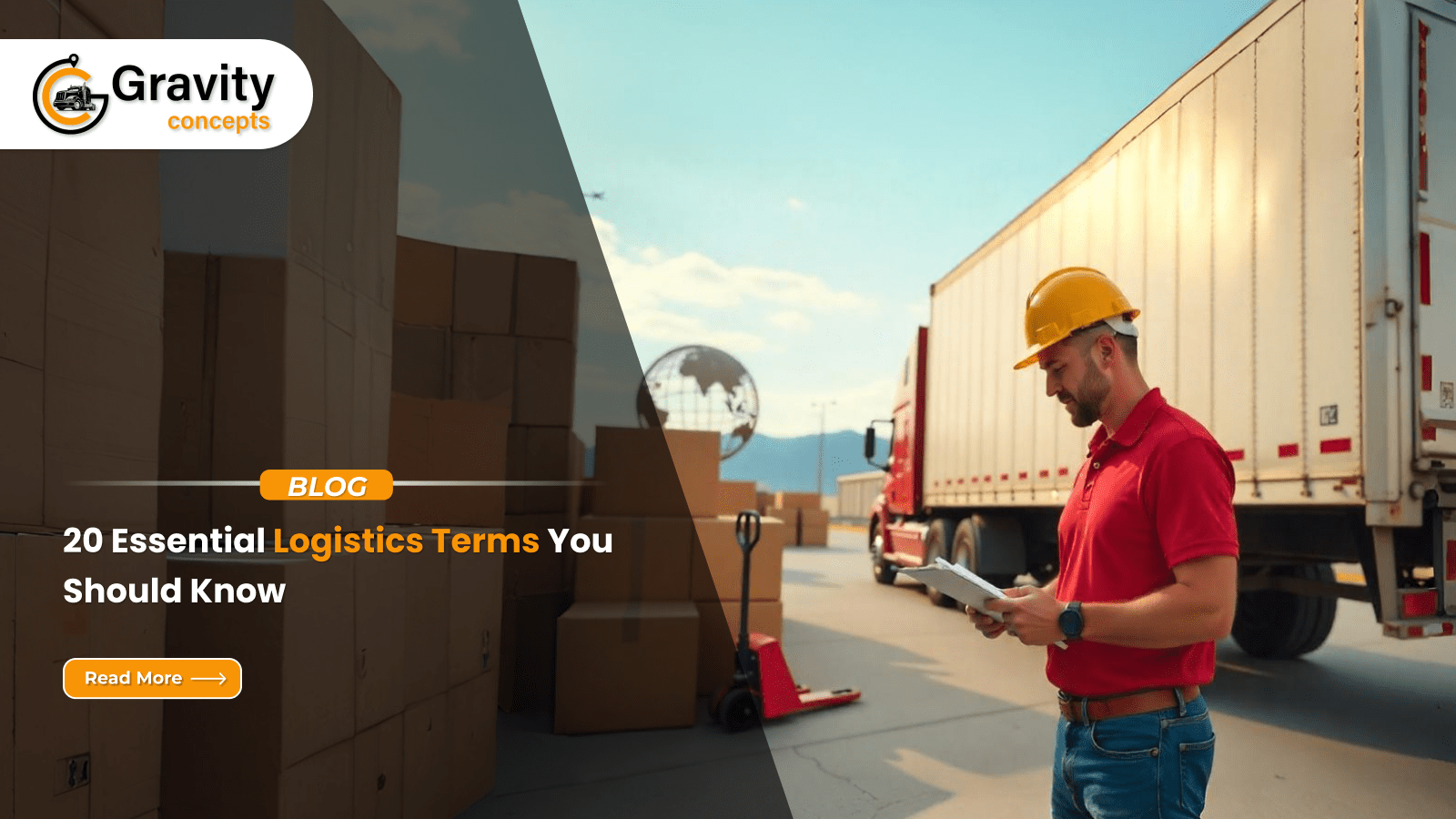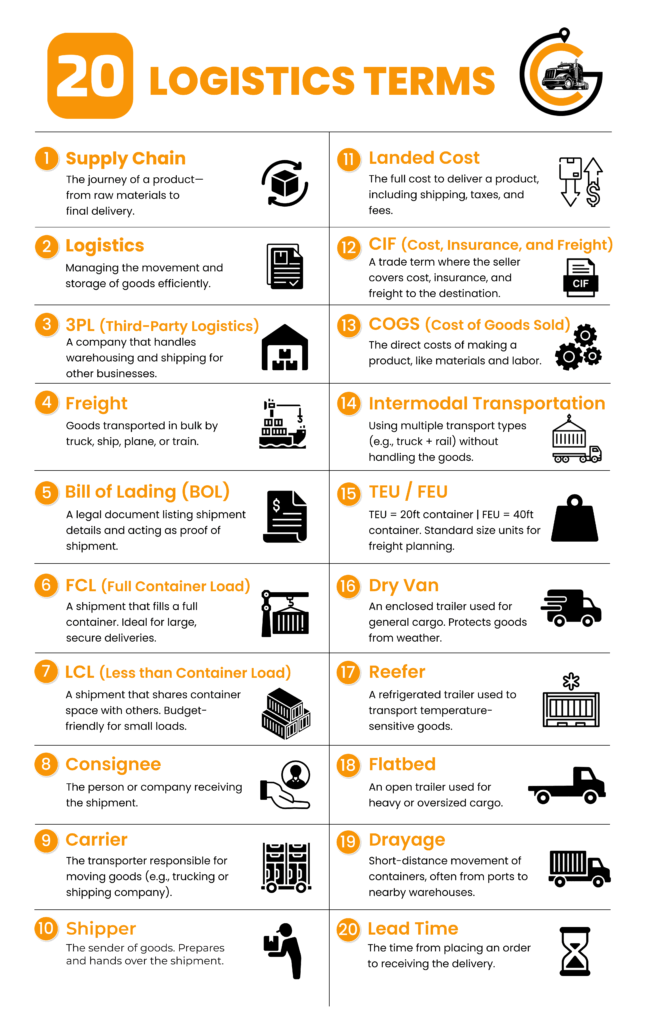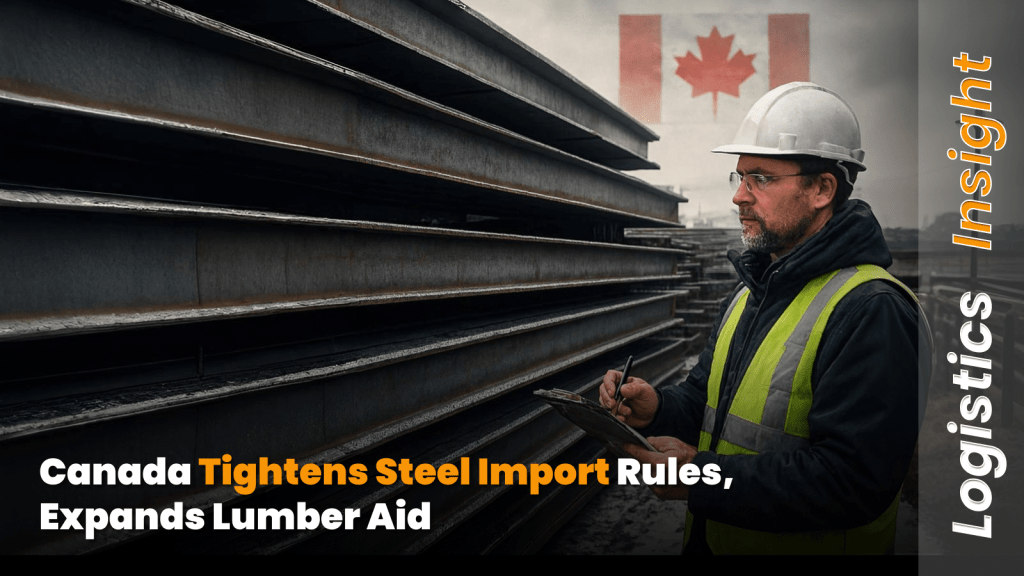
20 Essential Logistics Terms You Should Know
Logistics is full of terms that can sound confusing if you’re not familiar with them. But don’t worry, once you learn the basics, things become much clearer. Understanding these logistics terms helps businesses save time, reduce errors, and improve efficiency.
Let’s break down the most important terms in simple words so you can feel confident whether you’re shipping products or managing supply chains.

Supply Chain
A supply chain is the journey of a product from raw materials to delivery. It includes suppliers, manufacturers, warehouses, transporters, and retailers. Everything needs to work together so that goods reach customers on time. That’s why managing the supply chain well is important for smooth operations.
Logistics
Logistics is the part of the supply chain that deals with the movement and storage of goods. It includes packing, shipping, warehousing, and delivery. The goal is to move things efficiently and cost-effectively. Good logistics helps avoid delays and cuts down costs.
3PL (Third-Party Logistics)
3PL companies help manage your logistics. They store your goods in their warehouses and handle the delivery. This way, you don’t need to own trucks or buildings. It saves money and lets you focus on your business, while experts take care of the shipping.
Freight
Freight refers to goods that are transported in bulk. You might send freight by truck, ship, train, or plane. It could be raw materials or finished products. The key is that freight usually involves larger shipments and commercial transportation.
Bill of Lading (BOL)
A Bill of Lading is a legal document that lists what you’re shipping and where it’s going. It’s used during transport to prove what’s in the shipment. It also shows who is sending and receiving the goods. This document helps avoid confusion and protects both sides in case of issues.
FCL vs. LCL
- FCL (Full Container Load) means one shipment fills an entire container. It’s used for large orders and is often faster.
- LCL (Less than Container Load) means your goods share space with others. It’s cheaper for smaller shipments but might take longer.
Choosing FCL or LCL depends on how much you’re shipping and your budget.
Consignee
The consignee is the person or company that receives the goods. Their name appears on shipping documents so the carrier knows who to deliver to. The consignee signs for the shipment once it arrives, confirming everything is received correctly.
Carrier
A carrier is the company or person responsible for moving your goods. It can be a trucking company, airline, or shipping line. They are in charge of safely delivering items to the right place.
Shipper
The shipper is the person or company sending the goods. They prepare the shipment and hand it over to the carrier. The shipper makes sure everything is packed, labeled, and documented properly.
Landed Cost
Landed cost is the total cost of getting a product to its final destination. It includes the purchase price, shipping, insurance, duties, and taxes. Knowing the landed cost helps you set prices correctly and avoid losing money.
CIF (Cost, Insurance, and Freight)
This term is used in international shipping. It means the seller pays for the cost of goods, insurance, and freight to the destination port. After that, the buyer pays for import duties and final delivery. It’s a useful term in global trade agreements.
COGS (Cost of Goods Sold)
COGS includes the direct costs of making a product like materials and labor. It does not include shipping or marketing. Knowing your COGS helps you track profits and price your items wisely.
Intermodal Transportation
This means using more than one type of transport to move goods like a truck and a ship. Intermodal shipping can save money and reduce delays. Containers make this easier because they move easily between transport types.
TEU and FEU
- TEU (Twenty-Foot Equivalent Unit) is a way to measure containers. One TEU is a 20-foot container.
- FEU (Forty-Foot Equivalent Unit) is double that size.
These units help you plan space, estimate shipping costs, and avoid surprises.
Dry Van
A dry van is a standard enclosed trailer used to transport goods. It’s like a big box on wheels. It protects items from weather and is ideal for general cargo like boxes, furniture, or electronics.
Reefer
A reefer is a refrigerated trailer. It keeps items like food, medicine, and flowers at the right temperature during transport. Temperature control is key to avoiding spoilage.
Flatbed
Flatbed trucks have no sides or roof. They’re used for oversized or awkward-shaped cargo like machinery or construction materials. These loads are strapped down securely during transport.
Drayage
Drayage is short-distance transport, often between a port and a nearby warehouse. It’s a small part of a bigger shipping process but plays a big role in keeping things on schedule.
Lead Time
Lead time is how long it takes from ordering to delivery. Knowing lead time helps with planning and ensures your shelves stay stocked.
Last-Mile Delivery
This is the final step in the delivery process getting goods from a warehouse or hub to the customer’s doorstep. It’s often the most expensive and time-sensitive part of logistics.
FAQs
What is supply chain management?
Supply chain management is the process of overseeing the entire journey of a product from raw materials to the customer. It involves suppliers, production, warehousing, transportation, and delivery. The goal is to improve efficiency, reduce delays, and keep costs low.
What does a Bill of Lading do?
A Bill of Lading is a legal receipt for the goods being shipped. It lists what’s being shipped, who’s sending it, and who’s receiving it. It helps track shipments and serves as proof in case of damage or loss.
What is the difference between FCL and LCL?
FCL is when you fill an entire container with your goods. It’s good for large shipments and is more secure. LCL is when your goods share space in a container with others ideal for small shipments. FCL is faster; LCL is cheaper.
What is the landed cost in logistics?
The landed cost is the full price of a product once it reaches its destination. It includes the cost of the product, shipping fees, insurance, customs duties, and taxes. Knowing this cost helps businesses price their goods correctly and avoid hidden fees.




Comments are closed